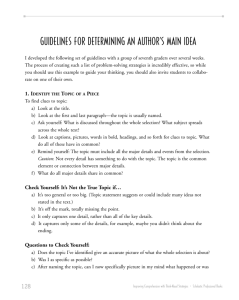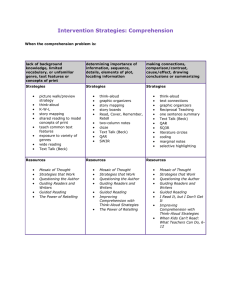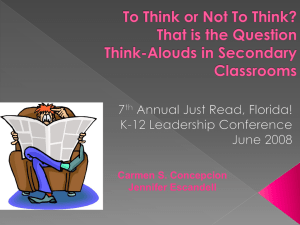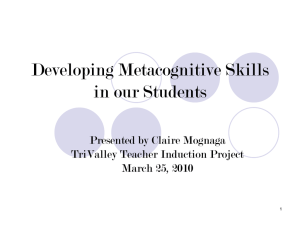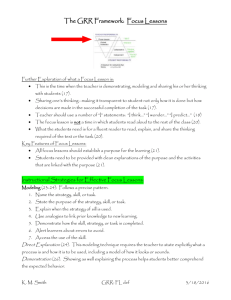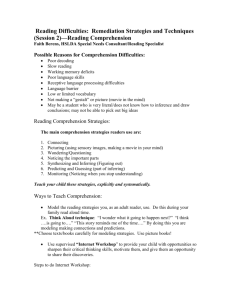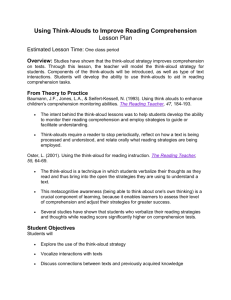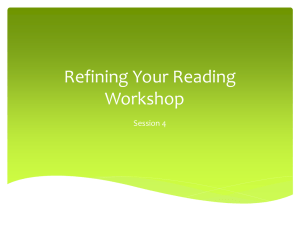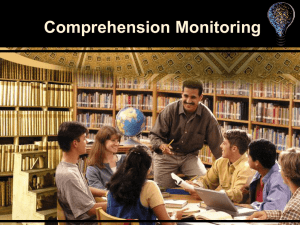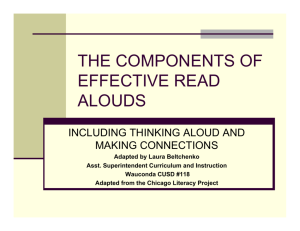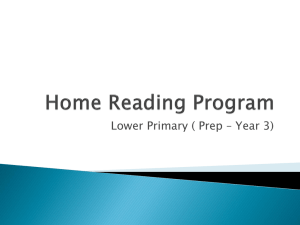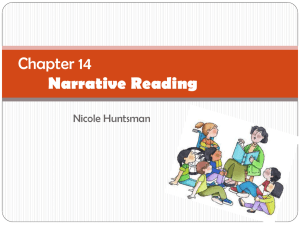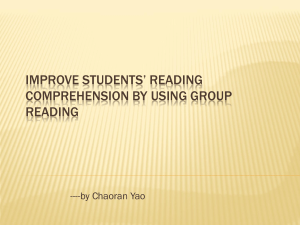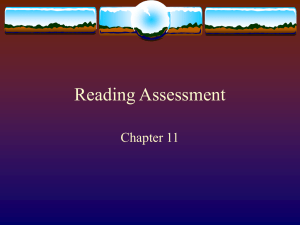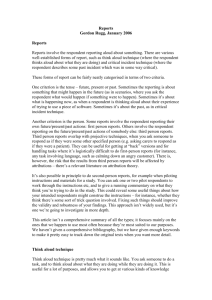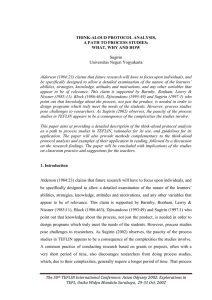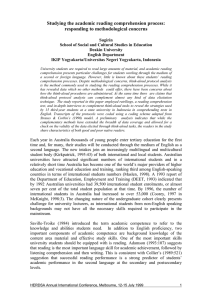Think Alouds Powerpoint
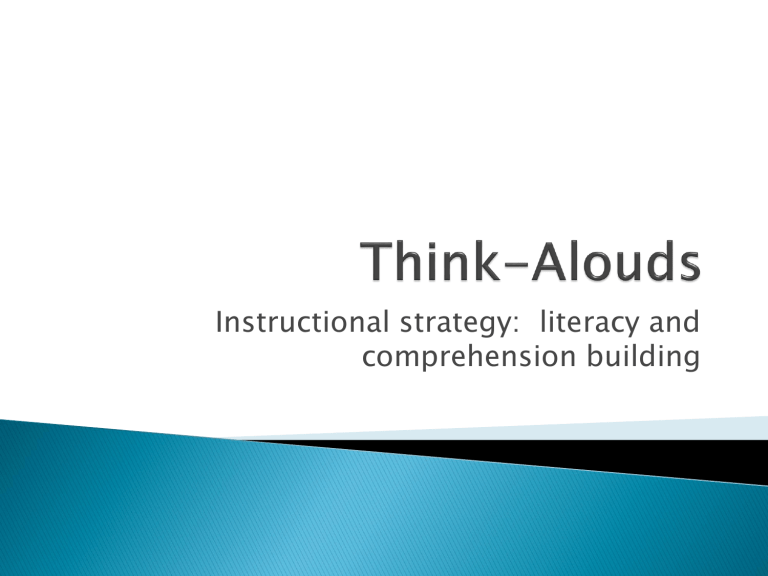
Instructional strategy: literacy and comprehension building
By the end of today’s professional development, I will be able to identify and apply key characteristics of Think-Aloud strategies as evidenced by connecting video demonstrations to teaching practices through group discussions and completing a graphic organizer.
Students harness and monitor their thinking processes.
Students use it for comprehension building, literacy development, and test taking strategies.
Teachers model it. Students can use it in groups and individually.
Revolves around metacognition (thinking about your thinking), applying it to comprehension and problem solving.
Allows students to harness their “inner voice” when reading or engaging with content.
Helps students rationalize and provide evidence of how they derived a response or solution.
Think-Alouds can be applied to test taking skills, assisting in finding the best response.
Whenever reading textual material.
Whenever finding solutions to problems.
Whenever going through steps in a process or procedure.
Whenever attempting to find correct answers on tests.
Think-Aloud Strategies
Three content-area teachers (history, English, and science) provide their rationale for why modeling academic word learning is important in their discipline. Use the table below to write down any observations you may have as you watch this lesson.:
History English Science Application to your content area Think-Aloud
1. Describe the word-solving approaches you can model for your students.
2. What can teacher modeling contribute to your students’ learning?
3. What do you believe is necessary in order for students to apply what is being modeled ?
How might you use think aloud/metacognition as a test taking strategy?
When in the coming week might you use this strategy?
What obstacles do you foresee in implementing this strategy?
http://books.heinemann.com/wordwise/#3 http://www.youtube.com/watch?v=weN37T8M
G5Q&feature=related
Explaining and teaching the steps of problem solving through selfreflection and review; that is, demonstrating how to say aloud the steps used in problem solving.
Share your ideas from your graphic organizer with your colleagues.
Share with the whole faculty.
Think-Aloud Strategies
Three content-area teachers (history, English, and science) provide their rationale for why modeling academic word learning is important in their discipline. Use the table below to write down any observations you may have as you watch this lesson.:
History English Science Application to your content area Think-Aloud
1. Describe the word-solving approaches you can model for your students.
2. What can teacher modeling contribute to your students’ learning?
3. What do you believe is necessary in order for students to apply what is being modeled ?
How might you use think aloud/metacognition as a test taking strategy?
When in the coming week might you use this strategy?
What obstacles do you foresee in implementing this strategy?
1.
TeacherVision: This website is a comprehensive educational resource, providing a wealth of materials. This specific link focuses on Think-Alouds. http://www.teachervision.fen.com/skill-builder/problem-solving/48546.html
2.
Word Wise & Content Rich: Five Essential Steps to Teaching Academic Vocabulary, by Douglas
Fisher and Nancy Frey. This site incorporates overviews of each chapter and, most importantly, podcasts and videos from the authors and their colleagues. The video demonstration for the professional development on Wednesday, Feb. 8. Was from Chapter 3, “Making it Transparent.” http://books.heinemann.com/wordwise/#top
3. Think-Alouds as Reading Comprehension strategies
Adapted from Content Area Reading:Literacy and Learning Across the
Curriculum by Richard T. and Joanne L. Vacca http://literacy.kent.edu/eureka/strategies/think_aloud.pdf
4. Student example of a math think-aloud http://www.youtube.com/watch?v=weN37T8MG5Q&feature=related
